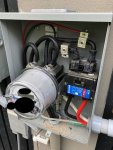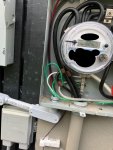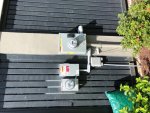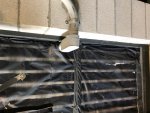XStroX
Member
- Location
- Charleston, SC
Hi All,
First time poster and badly in need of help. I live in a raised elevation home (drive under with 2 floors above it) and I'm trying to have a 240v outlet installed in the drive under for charging a new Tesla. I had 3 electricians here today to give me quotes/estimates and the 3 left me completely confused. My problem is that the only sub panel / breaker box in my home is on the 3rd floor in the middle of the floor plan. I'm told without tearing up multiple walls and ceilings I have two options:
1. Run new wiring from breaker box up into attic, through attic to corner of home and then down 20 feet of conduit outside home and then another 30 feet of conduit under the drive under to where I need the outlet. Not an easy task at all and I was told due to all the conduit and distance this would be costly.
2. Run a new sub panel off the meter/main/service panel that is outside the drive under a few feet away to inside the drive under. The first two electricians had to call their managers and then told me this was possible and to code but would be a bit costly. They both recommended this Option over Option 2. More material costs but far less labor they said. Also gives me options to expand in the future.
Here is where my problem comes in. The 3rd electrician said Option 2 is definitely not to code and that you can't splice into the wires in meter/main/service panel to run another sub panel. When I asked him why, he got upset and basically left.
I've attached two pictures of my meter/main/service panel. I have a solar system which you can see is spliced in at the top.
Can Option 2 be done per code?
Is here some other option I'm not thinking of?
Thanks!
XStroX


First time poster and badly in need of help. I live in a raised elevation home (drive under with 2 floors above it) and I'm trying to have a 240v outlet installed in the drive under for charging a new Tesla. I had 3 electricians here today to give me quotes/estimates and the 3 left me completely confused. My problem is that the only sub panel / breaker box in my home is on the 3rd floor in the middle of the floor plan. I'm told without tearing up multiple walls and ceilings I have two options:
1. Run new wiring from breaker box up into attic, through attic to corner of home and then down 20 feet of conduit outside home and then another 30 feet of conduit under the drive under to where I need the outlet. Not an easy task at all and I was told due to all the conduit and distance this would be costly.
2. Run a new sub panel off the meter/main/service panel that is outside the drive under a few feet away to inside the drive under. The first two electricians had to call their managers and then told me this was possible and to code but would be a bit costly. They both recommended this Option over Option 2. More material costs but far less labor they said. Also gives me options to expand in the future.
Here is where my problem comes in. The 3rd electrician said Option 2 is definitely not to code and that you can't splice into the wires in meter/main/service panel to run another sub panel. When I asked him why, he got upset and basically left.
I've attached two pictures of my meter/main/service panel. I have a solar system which you can see is spliced in at the top.
Can Option 2 be done per code?
Is here some other option I'm not thinking of?
Thanks!
XStroX






